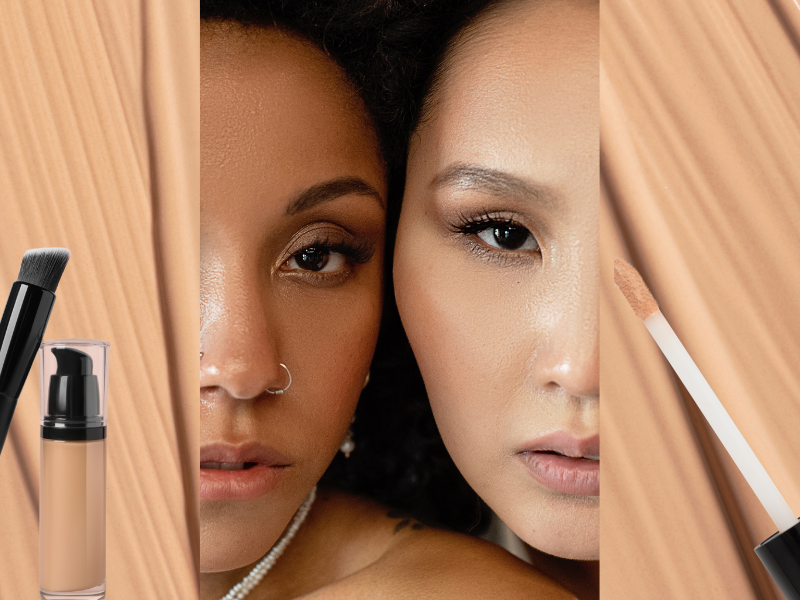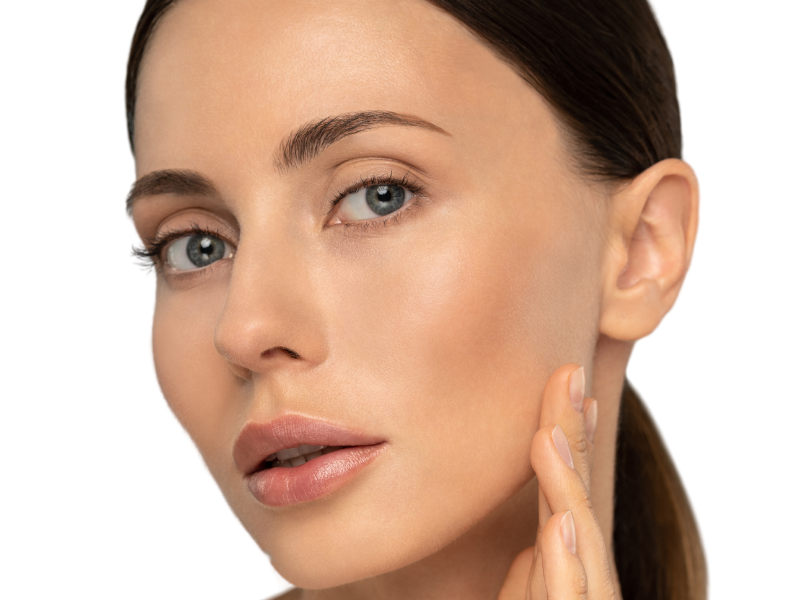Two essential makeup products, foundation and concealer, create a flawless complexion. While they may seem similar, they serve different purposes and have distinct characteristics that make them unique. Understanding their differences can help you achieve the perfect makeup look. Below, we will explore the key distinctions between foundation and concealer based on various factors.
1. Purpose Foundation and Concealer

The primary purpose of foundation is to create an even base for makeup by covering imperfections, evening out skin tone, and providing a smooth skin.It creates a uniform complexion when applied all over the face.
It used for targeted coverage. It specifically covers dark circles, blemishes, redness, and other imperfections that foundation may not fully conceal. Concealer provides extra coverage in specific areas where needed.
2. Coverage & Consistency
Foundation comes in different coverage levels, ranging from sheer to full coverage. Sheer and light coverage foundations provide a natural look, while medium and full coverage foundations offer a more polish and flawless appearance. The consistency of foundation can vary from liquid, cream, powder, or stick, catering to different skin types and preferences.
Concealer generally offers higher coverage than foundation. It is thicker in consistency, allowing it to effectively mask imperfections and provide a more concentrated level of coverage. Concealers come in liquid, cream, stick, and color-correcting formulas, each designed for specific concerns.
3. Application Areas
Foundation is apply all over the face, including the forehead, cheeks, nose, and chin. It creates a smooth canvas for other makeup products and helps balance out the skin tone.
Concealer, however, is apply only to specific areas that require extra coverage. These areas typically include under the eyes to hide dark circles, on blemishes or acne scars, around the nose to counter redness, and on any discoloration spots.
4. Shades & Undertones

Both foundation and concealer come in various shades and undertones to match different skin tones. However, people choose foundation shades base on the overall complexion, while they select concealer shades base on the correct area
For under-eye concealing, experts recommend a shade one to two shades lighter than your foundation to brighten the area. For covering blemishes or dark spots, a concealer shade that matches the foundation or is slightly darker works best.
5. Usage Order
The general rule of makeup application is to apply foundation first, followed by concealer. This order allows foundation to create an even base, reducing the amount of concealer needed. Applying concealer afterward helps to exact target any remaining imperfections without over-applying product.
6. Finish & Effect

Foundations come in different finishes, such as matte, dewy, satin, and natural, to cater to different skin types and need. A matte finish helps control oil and shine, while a dewy finish provides a radiant and hydrated look.
Concealers also offer different finishes, such as matte, radiant, or color-correcting. A matte concealer is ideal for covering blemishes, while a radiant concealer works best for brightening the under-eye area.
Conclusion
While both foundation and concealer play important roles in achieving a flawless makeup look, their differences in purpose, coverage, application, and finish make them unique. Foundation provides an even base for makeup, while concealer offers targeted coverage for specific imperfections. Understanding these differences will help you use both products effectively to enhance your natural beauty.
